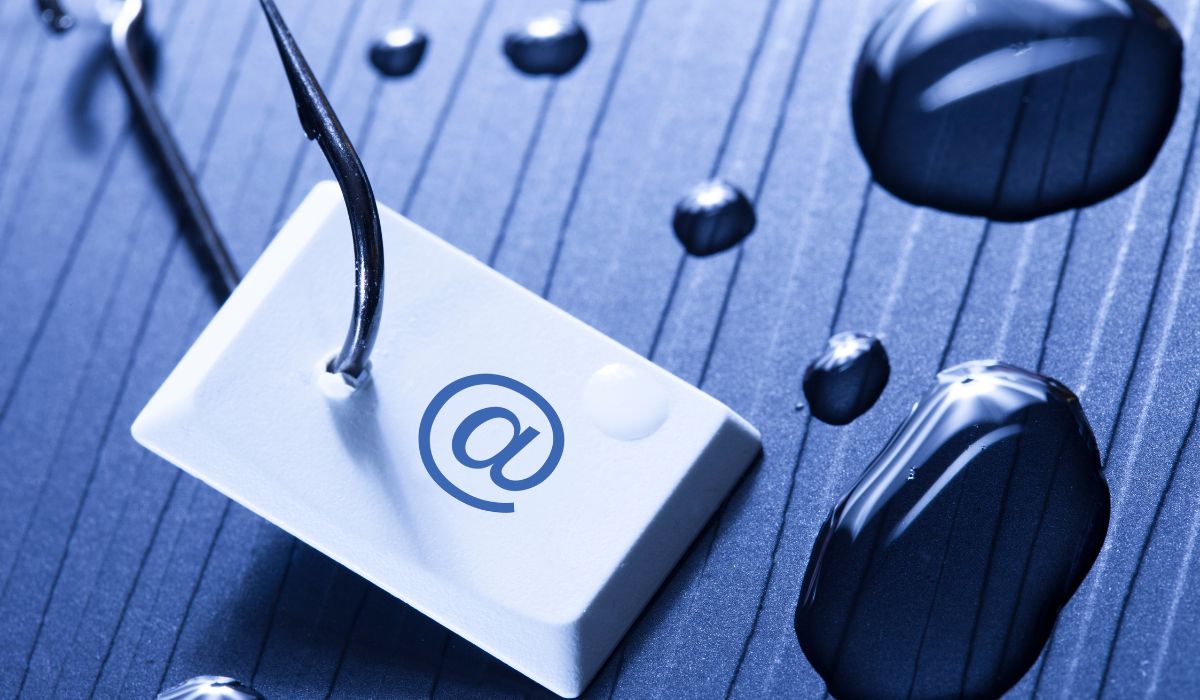Defending Against Phishing Email: Identification, Prevention, and Awareness Training

In today’s digital landscape, phishing emails have become a significant threat to online security. These deceptive messages aim to trick recipients into divulging sensitive information or performing malicious actions.
Understanding the nature of phishing emails and how to protect oneself is essential in maintaining a secure online presence.
This article explores various topics related to identifying and preventing phishing email attacks, equipping readers with the knowledge and tools to stay safe in their online interactions.
Table of Contents
Understanding Phishing Emails
Phishing emails are deceptive messages sent by cybercriminals with the intention of tricking recipients into revealing sensitive information or taking harmful actions. These emails often impersonate trustworthy entities such as banks, online services, or reputable organizations, making them appear legitimate at first glance. Understanding the tactics used by cybercriminals and the common characteristics of phishing emails is crucial in protecting oneself from falling victim to these scams.
Phishing emails employ various techniques to deceive recipients and manipulate their trust. They may use urgent or alarming language, claiming that immediate action is required to avoid consequences or to rectify a supposed issue. These emails often contain links that lead to fraudulent websites designed to capture personal information or install malware on the victim’s device. Additionally, phishing emails may request sensitive data such as passwords, credit card details, or social security numbers.
To make these emails seem genuine, cybercriminals meticulously craft them to resemble official communications. They may use logos, branding elements, and email signatures that mimic those of reputable organizations. However, upon closer inspection, there are common characteristics that can help identify phishing emails. These include grammatical errors, spelling mistakes, generic greetings, and email addresses that differ slightly from the genuine ones.
Real-life examples of phishing email scams demonstrate the potential consequences they can have. These scams can result in identity theft, financial losses, unauthorized access to personal accounts, and the spread of malware to other devices. It is essential to be aware of the risks associated with phishing emails and take appropriate measures to protect oneself and sensitive information.
By understanding how phishing emails operate, recognizing their common characteristics, and being aware of real-life examples, individuals can be better equipped to identify and avoid falling victim to these scams. Remaining vigilant, verifying the authenticity of emails, and adopting security best practices are vital steps in staying safe from phishing email attacks.
Recognizing Phishing Email Indicators
When it comes to identifying phishing emails, there are several key indicators to watch out for. By being vigilant and observant, you can better protect yourself from falling victim to these deceptive scams. Here are some common signs to look for when evaluating the legitimacy of an email:
Suspicious Sender Email Addresses and Domain Names
Pay close attention to the email address of the sender. Phishing emails often use email addresses that mimic legitimate organizations but may have slight variations or misspellings. Verify the sender’s email address and domain name to ensure they match the official contact information.
Poor Grammar, Spelling Errors, and Generic Greetings
Phishing emails often contain noticeable grammar and spelling mistakes. Legitimate organizations typically have professional communication standards, so be wary of emails with numerous errors. Additionally, generic greetings like “Dear Customer” instead of your name may indicate a lack of personalization and raise suspicion.
Urgent Requests, Alarming Subject Lines, or Enticing Offers
Phishing emails often employ urgency, fear, or enticing offers to prompt immediate action. Be cautious of subject lines that create a sense of urgency, such as “Your Account Will Be Closed!” or “Act Now to Claim Your Prize!” These tactics are designed to manipulate your emotions and push you into taking impulsive actions.
Unexpected Attachments or Clickable Links
Exercise caution when encountering unexpected attachments or links in emails, especially from unfamiliar senders or sources. Phishing emails may include malicious attachments or direct you to fake websites that aim to collect your personal information. Avoid clicking on suspicious links or downloading attachments unless you can verify their authenticity.
By paying attention to these indicators, you can identify potential phishing emails and take appropriate action. Remember, it is always better to err on the side of caution and verify the authenticity of an email before sharing sensitive information or clicking on links. If you receive a suspicious email, report it to your email provider and the relevant authorities to help combat phishing scams and protect others from falling victim to them.
Avoiding Phishing Email Pitfalls
To protect yourself from falling victim to phishing email scams, it is essential to adopt proactive measures and develop safe online practices. By following these guidelines, you can minimize the risks associated with phishing emails:
Verify the Legitimacy of the Sender through Independent Channels
Instead of relying solely on the information provided in the email, independently verify the sender’s identity through official websites, contact numbers, or trusted sources. Avoid using contact information provided within the email itself, as it may lead to fraudulent entities.
Hover Over Links to Reveal Their Actual Destination Before Clicking
Phishing emails often contain disguised links that lead to fraudulent websites. To verify the legitimacy of a link, hover your mouse over it without clicking. This action will reveal the actual URL in a tooltip or at the bottom of your browser window. If the link’s destination seems suspicious or differs from what is expected, refrain from clicking on it.
Avoid Sharing Personal or Financial Information via Email
Legitimate organizations rarely request personal or financial information via email. Be cautious of emails that ask you to provide sensitive data such as passwords, credit card details, or social security numbers. Instead of responding to the email, contact the organization directly using verified contact information to validate the request.
Be Cautious of Email Requests for Immediate Action or Confidential Data
Phishing emails often create a sense of urgency or exploit fear to prompt immediate action. They may threaten account suspension, claim unauthorized activity, or offer limited-time opportunities. Take a step back and assess the email objectively. Legitimate organizations typically provide clear and non-threatening communication, allowing you time to verify and respond thoughtfully.
By incorporating these practices into your daily online routine, you can significantly reduce the risks associated with phishing emails. Remember, staying vigilant, using independent verification channels, and adopting a healthy skepticism toward unsolicited requests are key to protecting your personal information and maintaining a secure online presence.
Protecting Against Phishing Emails
To enhance your defense against phishing emails, it is important to implement a multi-layered approach that combines awareness, technology, and proactive measures. Here are some effective strategies to protect yourself and your organization:
Educate Oneself and Employees about Phishing Awareness and Best Practices
Knowledge is a powerful tool in combating phishing attacks. Provide comprehensive training and educational resources to raise awareness about the techniques used by cybercriminals and teach best practices for identifying and avoiding phishing emails. This includes recognizing common phishing indicators, verifying sender information, and understanding the importance of secure online behavior.
Implement Email Filters and Spam Detection Software
Deploy robust email filters and spam detection software to automatically identify and quarantine suspected phishing emails. These tools can analyze incoming messages, assess their legitimacy, and divert suspicious emails to a separate folder or quarantine for further review. Regularly update and configure these filters to ensure optimal performance and protection.
Utilize Secure Email Gateways for Advanced Protection
Secure email gateways provide an additional layer of protection by analyzing email content, attachments, and embedded links in real-time. These gateways use advanced threat intelligence and machine learning algorithms to detect and block phishing attempts. They can also identify emerging threats and adapt their security measures accordingly.
Regularly Update Antivirus and Anti-Malware Software
Keeping your antivirus and anti-malware software up to date is crucial in defending against phishing attacks. These security tools help identify and remove malicious software, including malware often delivered through phishing emails. Regular updates ensure that your software has the latest threat definitions and security patches to effectively detect and mitigate emerging threats.
By combining these protective measures, you can significantly reduce the risk of falling victim to phishing emails. Remember, a proactive approach that combines education, technology, and ongoing vigilance is key to maintaining a secure email environment. Stay informed, stay updated, and empower yourself and your employees to recognize and respond appropriately to phishing attempts.
Pillar Support: Safeguarding Against Phishing Emails

At Pillar Support, we are dedicated to protecting individuals and organizations against the ever-present threat of phishing emails. With our expertise in phishing email prevention, we offer customized solutions to enhance email security, detect phishing attempts, and create a robust defense against cybercriminals.
Our comprehensive approach focuses on understanding your unique needs and designing tailored strategies to safeguard your email environment. We employ advanced technologies, such as email filters, spam detection software, and secure email gateways, to proactively identify and block phishing emails before they reach your inbox. By leveraging threat intelligence and machine learning algorithms, we stay one step ahead of evolving phishing techniques, providing you with cutting-edge protection.
In addition to technological solutions, we recognize the importance of education and awareness in mitigating the risks of phishing emails. Our fraud/awareness training programs empower individuals and employees with the knowledge and skills to recognize phishing indicators, employ best practices, and respond effectively to potential threats. By equipping your team with this valuable knowledge, you can create a culture of security and strengthen your defense against phishing attacks.
Pillar Support is committed to delivering exceptional service and ensuring the highest level of email security. We work closely with you to understand your specific requirements and tailor our solutions accordingly. Our dedicated team of experts remains up to date with the latest phishing trends, constantly refining our techniques and strategies to provide the most effective protection.
With Pillar Support by your side, you can have peace of mind knowing that your email environment is fortified against phishing email threats. We are here to support you every step of the way, safeguarding your sensitive information, and preserving your online security.
Contact us today to learn more about our phishing email prevention services and how we can help you strengthen your defenses. Together, we can create a safer digital landscape and combat the ever-present threat of phishing emails.
Frequently Asked Question
What Is a Phishing Email?
A phishing email is a deceptive message sent by cybercriminals with the intention of tricking recipients into revealing sensitive information or performing malicious actions. These emails often impersonate legitimate entities and employ various tactics to deceive the recipient.
What Are Examples of Phishing Emails?
Examples of phishing emails include messages that claim to be from banks, online services, or reputable organizations, requesting personal information such as passwords, credit card details, or social security numbers. Other examples include emails with urgent requests, alarming subject lines, or enticing offers aimed at manipulating the recipient into taking immediate action.
How Can You Tell a Phishing Email?
There are several signs to look for when identifying a phishing email. These include suspicious sender email addresses or domain names, poor grammar and spelling errors, generic greetings, and requests for immediate action or confidential data. Additionally, hovering over links to reveal their actual destination and being cautious of unexpected attachments are important precautions.
What Are the 5 Signs of a Phishing Email?
The five signs of a phishing email are:
1. Suspicious sender email addresses and domain names.
2. Poor grammar, spelling errors, and generic greetings.
3. Urgent requests, alarming subject lines, or enticing offers.
4. Unexpected attachments or clickable links.
5. Requests for personal or financial information via email.